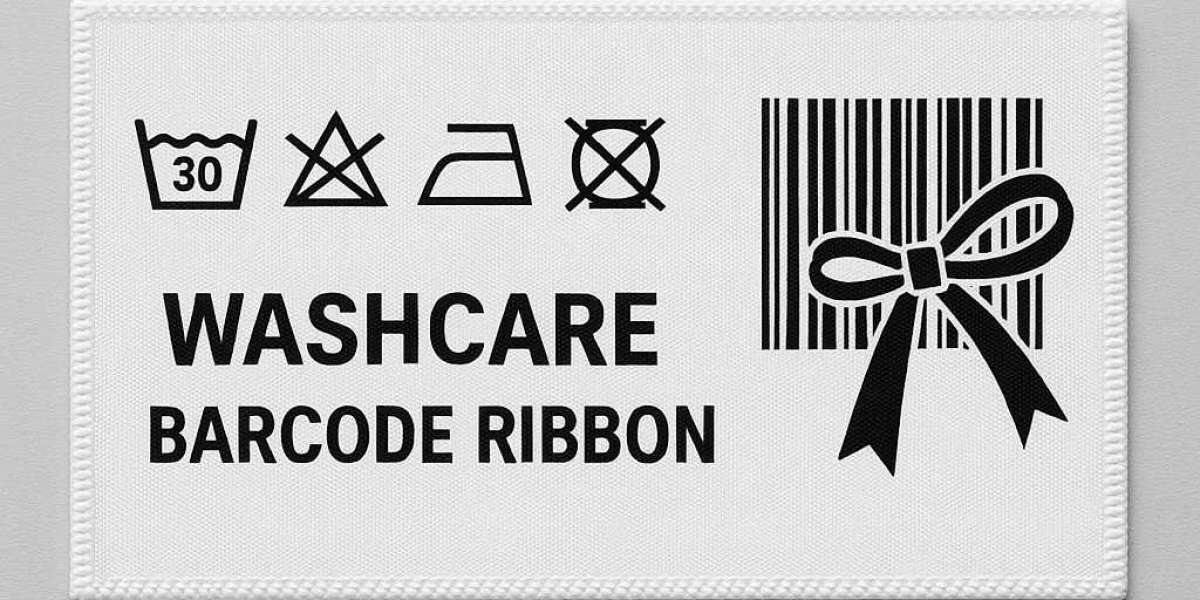In today's fast-paced manufacturing, retail, and garment industries, clear, durable, and scannable labels are crucial. One often overlooked but essential component of product labeling is the washcare barcode ribbon. These ribbons are critical for printing labels that remain intact and readable even after repeated exposure to harsh environments—especially laundering, abrasion, heat, and chemicals. This comprehensive guide explores what washcare barcode ribbons are, their types, uses, benefits, and how to choose the right one for your application.
What is a Washcare Barcode Ribbon?
A washcare barcode ribbon is a type of thermal transfer ribbon used specifically for printing on washable fabric labels, often made of materials like satin, nylon taffeta, or polyester. These ribbons are engineered to resist washing, dry cleaning, ironing, and even chemical exposure—ensuring that the printed information (like barcodes, care instructions, and brand details) remains legible throughout the garment’s life cycle.
Unlike direct thermal printing, which fades over time and is not resistant to heat and moisture, washcare ribbons are used in thermal transfer printing, where heat is used to transfer ink from the ribbon onto the label substrate, creating a more durable result.
Types of Washcare Barcode Ribbons
Washcare barcode ribbons are generally categorized based on the type of ink formulation used:
1. Resin Ribbons
Best for: Washcare labels that undergo intense laundering or chemical treatments.
Features: Highest durability and resistance to abrasion, solvents, and high temperatures.
Common substrates: Polyester, satin, taffeta, and other synthetic labels.
Applications: Garment labels, hospital uniforms, industrial workwear.
2. Resin-enhanced Wax Ribbons
Best for: Light washcare applications where moderate durability is acceptable.
Features: Less durable than full resin but more economical.
Applications: Casual clothing or accessories with minimal laundering needs.
Key Features of Washcare Barcode Ribbons
✅ Water Detergent Resistance
The primary advantage of washcare ribbons is their ability to withstand multiple washing cycles, including hot water, bleach, and industrial detergents.
✅ Scratch Abrasion Resistance
Printed labels retain legibility despite friction from ironing, folding, or physical contact.
✅ Chemical Resistance
These ribbons are highly resistant to chemicals like solvents, acids, or cleaning agents often used in dry cleaning.
✅ High Print Definition
Ideal for printing small barcodes, logos, and care symbols with exceptional clarity.
✅ Compatibility
They are compatible with a wide range of thermal transfer printers such as Zebra, TSC, Sato, Godex, Datamax, and more.
Common Applications
Washcare barcode ribbons are essential in many industries, particularly where longevity of labeling is critical:
? Apparel Industry
Care instruction labels
Size tags
Brand tags
Garment tracking barcodes
? Healthcare
Hospital linens and uniforms
Reusable patient garments
Sterile packaging
? Laundries Uniform Services
Barcode tags for sorting and tracking
Rewash identification labels
? Industrial Laboratory Clothing
Safety wear labels that must remain readable despite frequent washing and exposure to chemicals
Benefits of Using Washcare Barcode Ribbons
Improved Label Longevity: Withstands hundreds of wash cycles without fading or smudging.
Enhanced Traceability: Barcodes remain scannable, aiding in inventory and logistics.
Cost Efficiency: Reduces the need for label replacements and reprints.
Brand Integrity: Maintains a professional appearance with crisp print quality.
Regulatory Compliance: Meets garment labeling standards and care labeling legislation in many countries.
How to Choose the Right Washcare Ribbon
When selecting a washcare barcode ribbon, consider the following:
? Substrate Compatibility
Ensure the ribbon is suitable for the material of your label—satin, nylon, polyester, etc.
? Durability Requirements
Assess the level of washing and chemical exposure the label will endure. Go for full resin ribbons for heavy-duty requirements.
?️ Printer Compatibility
Verify that the ribbon is compatible with your thermal transfer printer’s specifications in terms of width, core size, and winding direction.
? Cost Considerations
Although resin ribbons are more expensive than wax or wax-resin, their durability justifies the investment in high-exposure applications.
Best Practices for Washcare Ribbon Printing
Use the correct heat settings: Too high or too low can affect print quality and adhesion.
Store ribbons properly: Keep in a cool, dry place to avoid degradation.
Run print tests: Especially when switching substrates or suppliers.
Match ribbon and label material: Compatibility is crucial for durability.
Conclusion
Washcare barcode ribbons are a vital part of the labeling process in industries where durability, readability, and longevity matter. Whether you are manufacturing fashion apparel, hospital garments, or industrial uniforms, choosing the right ribbon ensures that your labels withstand the test of time, wash, and wear.







